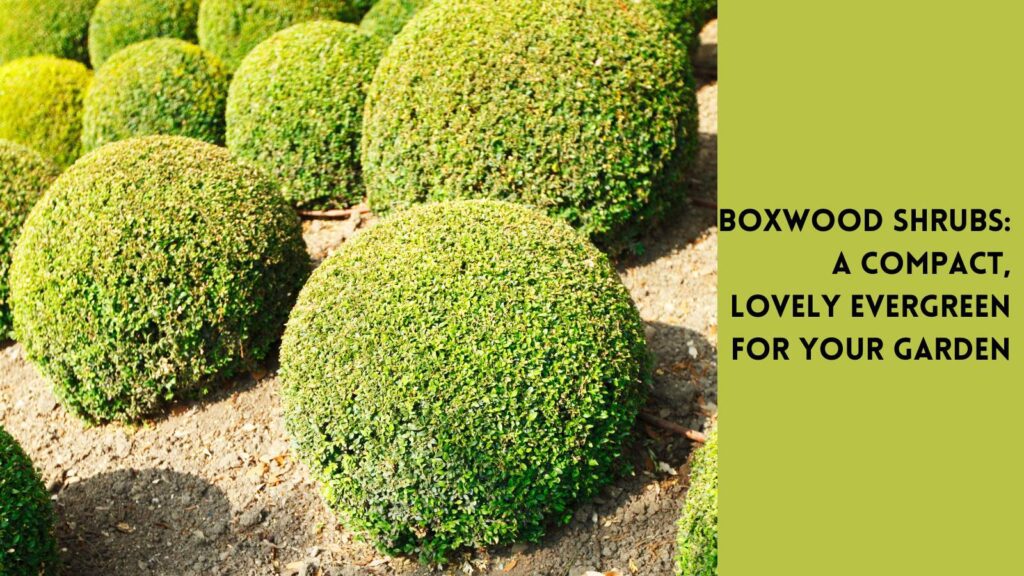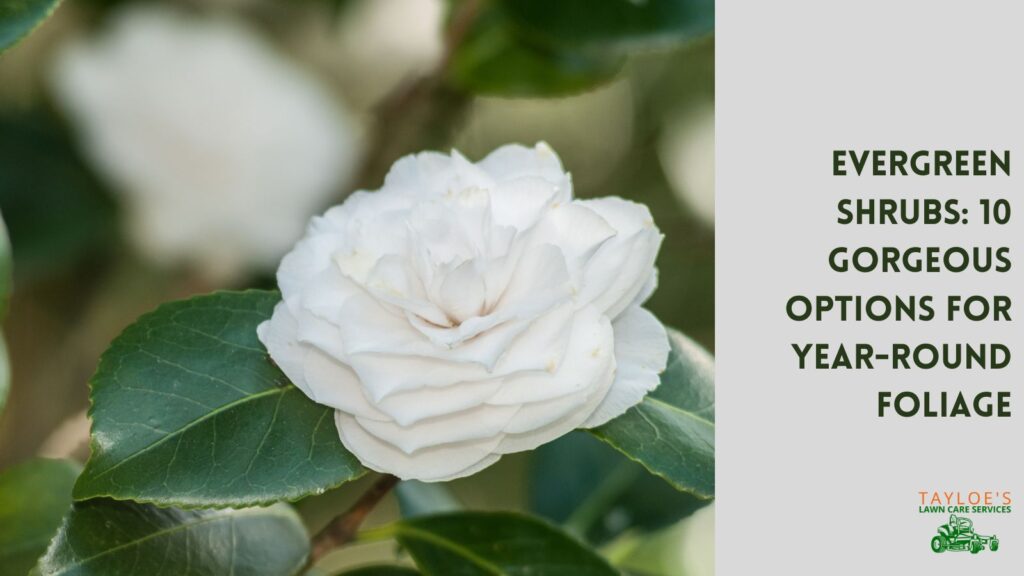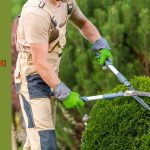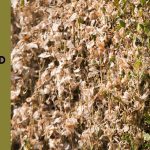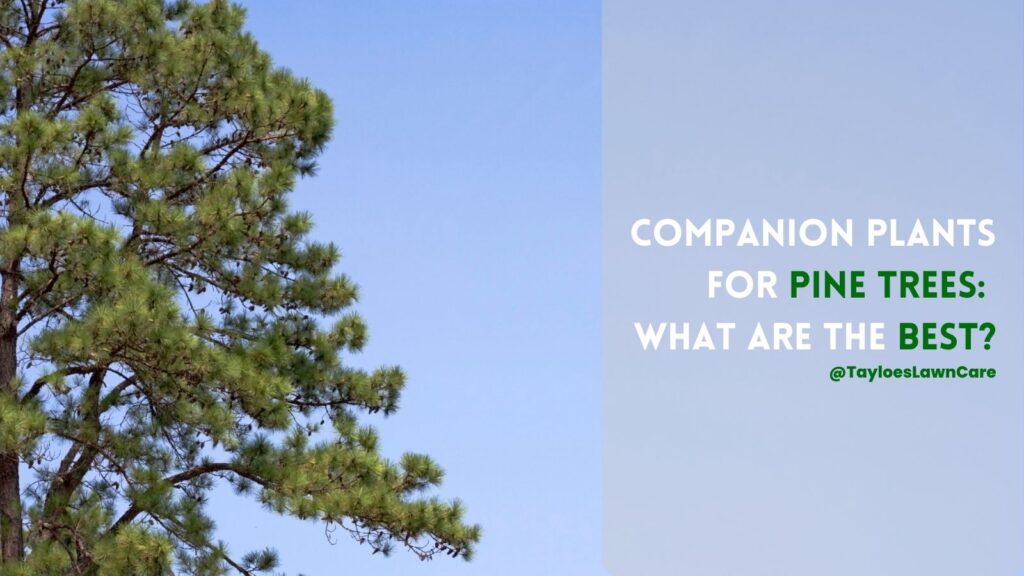Last Updated on: 18th March 2025, 01:28 pm
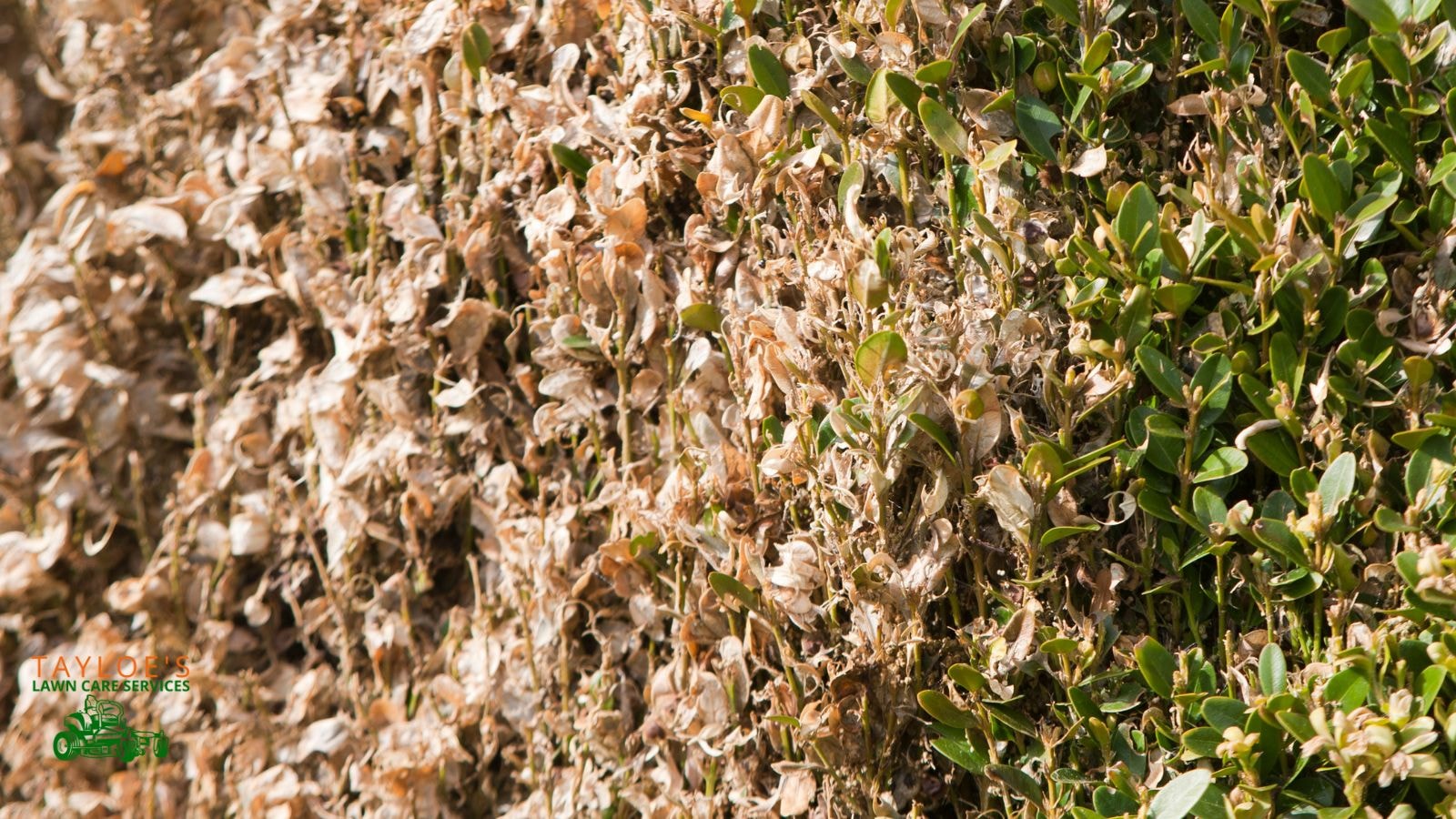
Read how a fungal pathogen can cause widespread destruction—and what you can do to stop it.
Noticed something off with your boxwood plants? Brown spots, yellowing leaves, or rapid leaf drop? It’s frustrating after all the effort you’ve put into your landscape. Could it be boxwood blight? If so, quick action is essential.
This fungal disease spreads quickly, stripping boxwoods of their leaves and even killing them if left unchecked.
The good news? If you catch it early, you can stop it from spreading. This guide will help you identify the signs, prevent further damage, and protect your landscape.
What is Boxwood Blight?
Boxwood blight is a devastating disease caused by the fungal pathogen Calonectria pseudonaviculata. First detected in the U.S. in 2011, it has since made boxwood susceptible across multiple states, affecting not just boxwoods (Buxus spp.) but also related plants like Pachysandra terminalis (Japanese spurge) and Pachysandra procumbens (Allegheny spurge).
This disease thrives in warm, humid conditions, making landscapes with dense plantings and poor air circulation especially vulnerable. Once it takes hold, it can cause severe defoliation and even lead to the eventual death of the plant.
Recognizing Early Signs of Boxwood Blight
The first noticeable signs of boxwood blight are small, brown spots on leaves that gradually expand and merge. This is followed by black or dark brown lesions developing on stems, a hallmark of the fungal pathogen. As the disease progresses, infected leaves turn brown, shrivel, and fall—a process known as boxwood leaf drop.
Additional symptoms include:
Dark brown cankers on stems, causing dieback.
Rapid defoliation, leaves drop within a month of infection.
Leaf spots resembling volutella blight, a different disease with slower progression.
Just so you know, other boxwood issues can resemble box blight, making accurate identification crucial before taking action.
Common Boxwood Issues That Mimic Blight
Not all browning boxwoods have blight! Here’s how to tell the difference:
Winter Burn – Leaves turn brown or orange due to cold damage but remain attached to the plant. Unlike boxwood blight, this isn’t caused by a fungal pathogen and doesn’t result in rapid leaf drop.
Volutella Blight – Causes yellowing leaves and pink spore masses on branches. While Volutella blight also leads to defoliation, it progresses more slowly than boxwood blight.
Macrophoma Leaf Spot – A fungal disease that causes straw-colored leaves with tiny black lesions. This fungus doesn’t have the rapid defoliation seen in blight.
Boxwood Leafminer Disease – Caused by insect larvae tunneling inside leaves, leading to blistered, discolored foliage, but no stem lesions or quick leaf drop.
Pro Tip: A boxwood suffering from blight disease will appear thin and bare, almost as if scorched. The speed of leaf drop is one of the biggest indicators of this disease.
How Boxwood Blight Spreads
The pathogen responsible for boxwood blight spreads primarily through:
Infected plants from nurseries or reputable suppliers may not be showing symptoms of disease yet.
Fallen leaves and leaf debris on the ground, which harbor fungus or mold spores for years.
Splashing water from overhead watering or rain, transferring spores to healthy plants.
Contaminated gardening tools and gloves.
Isolation and Immediate Action
Step 1: Confirm the Diagnosis
If you suspect boxwood blight, send a plant sample to your local extension office or a plant pathology lab for official confirmation before proceeding.
Step 2: Remove Infected Plants
Once confirmed, remove the entire shrub, including roots, and dispose of it properly using one of these methods:
🔥 Burning (if allowed in your area).
🗑️ Double-bagging in plastic and sending to a landfill.
⚰️ Burying at least two feet deep to prevent fungal spread.
Step 3: Decontaminate Tools & Landscape
To prevent reinfection, sanitize all tools with:
✅ A 70% alcohol solution, soaking for at least 30 seconds.
✅ A fungicide solution containing thiophanate-methyl (follow label instructions).
Boxwood Blight Prevention and Long-Term Management
Boxwood blight is notoriously difficult to eradicate once established, making prevention the best strategy. Below are key management practices (steps) to help safeguard your boxwoods and maintain a healthy landscape.
1. Choose Resistant Cultivars Before you Plant Boxwoods
Although no boxwood is completely immune, some cultivars show higher resistance to boxwood blight. Search for these cultivars when purchasing new plants:
‘Green Beauty’ (Japanese littleleaf boxwood).
‘Northern Emerald’ and ‘Little Missy’ (Common Buxus spp.).
2. Proper Planting and Maintenance
Space plants adequately to improve airflow. Check your plants at least a month or 45 days apart, especially during the summer growing season
Opt for drip irrigation; avoid overhead watering to keep leaves dry and reduce fungus spread.
Remove fallen leaves and leaf debris regularly.
Before pruning stems of the shrub, clean the pruners with a fungicide to avoid accidentally spreading disease.
3. Fungicides as a Control Measure
While plants treated with a fungicide can’t guarantee a blight cure, early and consistent application of thiophanate methyl or other recommended treatments can provide good control and help slow its spread.
The Hidden Threat: Boxwood Holiday Decorations
Many gardeners unknowingly introduce boxwood blight through holiday wreaths, garlands, and decorations. These clippings often come from infected plants and can spread spores to your landscape.
✅ DO NOT compost boxwood greenery—dispose of it in sealed plastic bags and send it to a landfill.
✅ Keep boxwood holiday decorations away from live boxwood shrubs in your yard.
Many gardeners unknowingly introduce boxwood blight through holiday wreaths, garlands, and decorations. These clippings often come from infected plants and can spread spores to healthy boxwoods in your landscape. To reduce the risk:
✔ Inspect decorations before bringing them home.
✔ Avoid placing cut boxwood greenery near live plants.
✔ Dispose of decorations properly after the season—never compost them.
Alternative Plants for Your Landscape
If you want to avoid blight altogether, consider planting Japanese spurge (Pachysandra terminalis) or Allegheny spurge (Pachysandra procumbens), both resistant to boxwood blight.
Final Thoughts: You Can Still Successfully Grow Boxwood Plants
Of course, Boxwood blight is a serious threat to , but early detection and fast action can stop its spread. You can keep your landscape healthy and thriving by identifying symptoms early, following strict hygiene practices, and choosing resistant cultivars.
Author Profile

- Deborah Tayloe is the CEO and co-founder of Tayloe's Lawn Care Services, LLC. She has a B.S.Ed and holds certificates in soil and water management and herbology from accredited programs.
Latest entries
 GardeningSeptember 27, 2025What perennials, shrubs, and trees don’t like fall pruning (and why)?
GardeningSeptember 27, 2025What perennials, shrubs, and trees don’t like fall pruning (and why)? Trees and ShrubsSeptember 14, 2025Fall Shrub Pruning Guide (September–October)
Trees and ShrubsSeptember 14, 2025Fall Shrub Pruning Guide (September–October) Trees and ShrubsApril 22, 2025Boxwood Blight: Early identification and isolation
Trees and ShrubsApril 22, 2025Boxwood Blight: Early identification and isolation Flower GardenApril 8, 2025John F. Kennedy Rose: Hybrid tea rose with elegant white blooms
Flower GardenApril 8, 2025John F. Kennedy Rose: Hybrid tea rose with elegant white blooms

